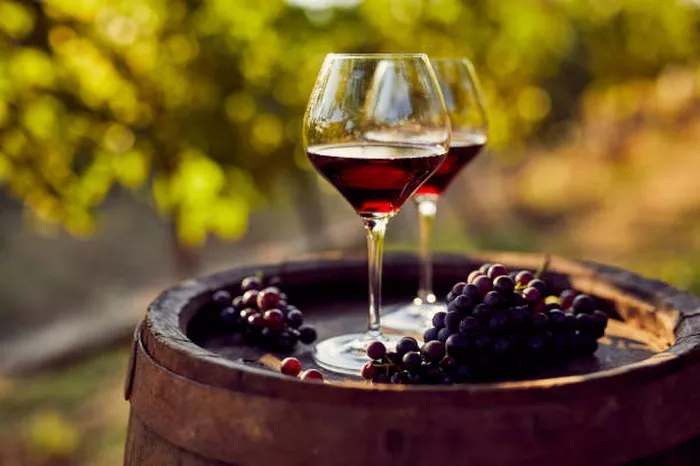The quest for a healthier lifestyle often involves a meticulous examination of one’s diet, with particular attention paid to the calorie content of various foods and beverages. Amidst this scrutiny, questions frequently arise regarding the caloric impact of alcoholic beverages, including the beloved white wine. So, how many calories are in a standard glass of white wine? Let’s embark on a journey to unravel this enigma, exploring factors that influence caloric content, understanding serving sizes, and considering implications for health and wellness.
Understanding the Basics: Calories in White Wine
To address the query, “How many calories in a standard glass of white wine?” we must first comprehend the fundamentals of caloric content in wine. White wine, like its red counterpart, derives its caloric value primarily from alcohol, with each gram contributing approximately seven calories. Additionally, residual sugars, if present, can add to the overall calorie count. However, the exact number of calories in a glass of white wine can vary based on several factors, including alcohol content, sugar content, and serving size.
Factors Influencing Caloric Content
The caloric content of white wine hinges significantly on its alcohol by volume (ABV) and sugar content. Generally, wines with higher ABV levels contain more calories per serving. Similarly, wines with residual sugar, such as off-dry or sweet varieties, will boast a higher calorie count compared to drier counterparts. Moreover, factors like winemaking techniques, grape variety, and region of origin can influence the final calorie tally of a glass of white wine. Thus, while it’s essential to understand the average caloric content, it’s equally crucial to acknowledge the variability inherent in different white wine offerings.
See Also: good inexpensive chardonnay
Exploring Serving Sizes
When pondering, “How many calories in a standard glass of white wine?” serving size emerges as a pivotal consideration. The concept of a “standard” glass can be somewhat nebulous, as pouring sizes may vary depending on cultural norms, individual preferences, and even glassware. However, a standard serving of wine is commonly defined as five ounces, constituting approximately 150 milliliters. Understanding this standard measurement is imperative for accurate calorie estimation and informed decision-making regarding alcohol consumption.
Caloric Comparison: White Wine vs. Other Beverages
To contextualize the caloric content of white wine, it’s instructive to compare it with other beverages. While white wine typically contains fewer calories than many cocktails and sweetened mixed drinks, its calorie count may surpass that of certain lighter options, such as light beer or spirits mixed with zero-calorie mixers. This comparison underscores the importance of mindful drinking, wherein individuals weigh not only taste preferences but also caloric implications when selecting alcoholic beverages.
The Impact of Alcohol Content on Calories
The alcohol content of white wine serves as a primary determinant of its caloric load. Generally, wines with higher ABV percentages harbor more calories per serving. While alcohol contributes significantly to a wine’s flavor and aroma, it also packs a caloric punch. Thus, opt for lower ABV white wines or consider diluting wine with sparkling water or ice to reduce calorie intake while still savoring the taste.
Navigating Sugar Content: Dry vs. Sweet White Wines
Another critical aspect influencing the caloric content of white wine is its sugar content. Dry white wines, such as Sauvignon Blanc or Chardonnay, typically contain minimal residual sugar and thus boast a lower calorie count. Conversely, off-dry or sweet white wines, such as Riesling or Moscato, contain higher levels of residual sugar, contributing to a more substantial caloric load. Those mindful of their calorie intake may opt for drier white wine varieties to enjoy a lighter libation without sacrificing taste.
The Role of Serving Size in Caloric Management
In the quest to monitor calorie consumption, controlling serving sizes proves paramount. While a standard serving of white wine comprises five ounces, it’s not uncommon for pour sizes to exceed this measure, especially in social settings or establishments with generous bartenders. Consequently, individuals seeking to manage their calorie intake should exercise vigilance when consuming wine, adhering to recommended serving sizes to avoid unwittingly surpassing their caloric thresholds.
Balancing Enjoyment and Moderation
The pursuit of health and wellness need not entail complete abstention from alcoholic beverages like white wine. Rather, it necessitates a balanced approach that prioritizes moderation and mindfulness. Savvy consumers can enjoy a glass of white wine while remaining cognizant of its caloric implications, selecting lower-calorie options when feasible and moderating portion sizes to align with dietary goals.
Practical Tips for Calorie-Conscious Wine Consumption
For those striving to imbibe white wine judiciously while managing their calorie intake, several strategies can prove beneficial. Opting for lighter white wine varieties, such as Pinot Grigio or Albariño, can help minimize caloric consumption without sacrificing flavor. Additionally, diluting wine with sparkling water or opting for wine spritzers can reduce overall calorie intake while prolonging the drinking experience. Moreover, practicing mindful drinking, savoring each sip, and alternating between wine and water can foster a more conscious approach to consumption, promoting both enjoyment and wellness.
Conclusion
In conclusion, the query, “How many calories in a standard glass of white wine?” underscores the importance of understanding the factors influencing caloric content, including alcohol and sugar levels, as well as serving sizes. While the caloric content of white wine can vary based on these factors, individuals can make informed choices by opting for lower-calorie varieties and practicing moderation in consumption. By balancing enjoyment with mindfulness, wine enthusiasts can savor their favorite libation while maintaining a health-conscious lifestyle.


